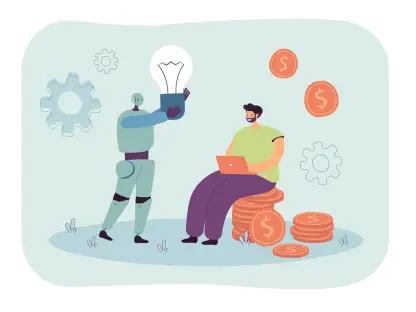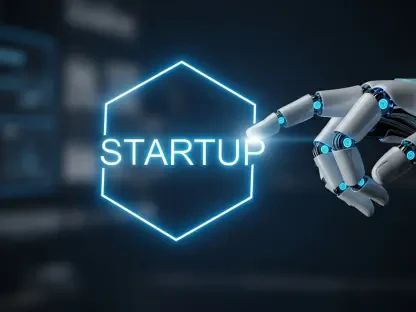Today, we’re thrilled to sit down with Vijay Raina, a renowned expert in enterprise SaaS technology and software design. With a deep background in crafting innovative tools and providing thought leadership in architecture, Vijay offers unique insights into the rapidly evolving world of AI and open source software. In this conversation, we dive into the transformative potential of AI platforms, the importance of transparency in development, and the role of open source in driving innovation. Let’s explore how these elements are shaping the future of technology for businesses and developers alike.
Can you share your perspective on how AI is reshaping the landscape for SaaS companies, especially in terms of innovation and customer expectations?
Absolutely. AI is fundamentally changing the game for SaaS companies by accelerating innovation and raising the bar for what customers expect. Businesses are no longer just looking for tools that solve problems—they want intelligent systems that anticipate needs, optimize workflows, and deliver personalized experiences. For us in the SaaS space, this means integrating AI to handle complex tasks like predictive analytics or automated decision-making, while also ensuring these solutions are accessible and scalable. The challenge is balancing cutting-edge tech with usability, especially for enterprises that need robust, secure platforms.
What inspired the development of specialized AI platforms for enterprises, and how do they address unique business challenges?
The inspiration comes from a clear gap in the market. Many existing tools are great for developers or hobbyists but fall short when it comes to enterprise needs like security, compliance, and integration with existing systems. Enterprises deal with massive datasets, complex models, and the need for collaboration across teams. Specialized AI platforms are built to streamline these processes—think of managing code, data, and models in one cohesive environment. They tackle challenges like version control, reproducibility of results, and ensuring IT governance, which are critical for businesses operating at scale.
How do you see the role of transparency in AI development, and why does it matter so much for trust and accountability?
Transparency in AI development is non-negotiable. When systems make decisions that impact people’s lives—whether it’s in healthcare, finance, or other fields—users need to understand how those decisions are made. Without visibility into training data or algorithms, there’s a risk of bias or errors going unchecked, which erodes trust. Transparency builds accountability, allowing businesses and regulators to verify that AI systems are fair and ethical. It’s not just a technical issue; it’s about ensuring technology serves humanity responsibly.
Why do you think open source plays such a critical role in advancing AI, beyond just making tools accessible?
Open source is a catalyst for innovation in AI because it creates a global playground for ideas. When code, models, and sometimes even datasets are openly available, you get diverse perspectives contributing to solutions—far beyond what a single company could achieve. It democratizes access, letting smaller players or researchers experiment without massive budgets. Plus, it fosters a community-driven approach to solving problems like security or interpretability, which benefits everyone. It’s not just about access; it’s about accelerating progress through collaboration.
Can you elaborate on the concept of open source as a ‘pro-market’ idea and how that applies to the AI industry?
Sure, calling open source ‘pro-market’ flips the old narrative that it’s anti-business. In reality, open source creates a marketplace of ideas where the best solutions rise to the top through competition and collaboration. In AI, this means developers and companies can build on shared foundations—models, frameworks, or tools—without reinventing the wheel. This lowers costs, speeds up innovation, and lets even small startups compete with giants. It’s pro-market because it fuels economic activity and drives value creation through shared progress, not monopolistic control.
What are some of the biggest hurdles in running an open source AI business compared to a traditional software company?
Running an open source AI business is uniquely challenging because you’re dealing with pre-commoditized innovation. In traditional software, you can charge for new features or updates, but with open source AI, much of the core tech—like models or algorithms—is freely available. The hurdle is finding a sustainable business model, often around complementary services like enterprise support, customization, or secure hosting. Additionally, AI involves massive computational costs for training or inference, which aren’t as prominent in traditional software. Balancing community contribution with profitability is a tightrope walk.
How do you envision AI platforms evolving to better support collaboration between technical and non-technical users in enterprises?
I see AI platforms evolving to become more intuitive and inclusive, bridging the gap between technical experts and business users. Right now, many tools are geared toward developers or data scientists, but the future lies in interfaces that let non-technical folks—like managers or analysts—interact with AI systems easily. Think drag-and-drop model building or natural language queries to analyze data. Collaboration will improve through shared workspaces where everyone can contribute, track changes, and understand outcomes, regardless of their tech background. It’s about democratizing AI within the enterprise.
What is your forecast for the future of open source in AI over the next decade?
I’m optimistic about open source in AI over the next decade. I believe we’ll see an explosion of community-driven models and tools as more organizations and individuals recognize the value of collaboration over proprietary silos. We’ll likely see stronger standards for transparency, especially around data sources, as ethical concerns grow. Governments and industries might push for open source as a way to ensure accountability and avoid vendor lock-in. At the same time, businesses built on open source AI will refine their models, focusing on value-added services. It’s going to be a vibrant, innovative space that shapes how AI impacts society.









